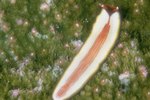
Arowanas are family Osteoglossidae fish that encompass numerous species from four separate continents: South America, Australia, Asia and Africa. Arowanas are frequently kept in aquariums, notably specimens from the silver arowana (Osteoglossum bicirrhosum) species. Arowanas often have what appear to be "whiskers" around their lips.
Arowana Basics
Arowanas are often appreciated for their elegant, lithe and narrow physiques. Keeping them in aquariums isn't always an easy task, as they mature to considerably large sizes, and often rapidly. Silver arowanas, for one, frequently exceed 3 feet in length. Some of them even grow to a whopping 9 feet long.
Arowanas can be rather fierce around others, notably tinier fish. Many arowanas even display anxious and uneasy temperaments in general. Because of these factors, many owners opt to let mature arowanas reside in tanks all by themselves.
Purpose of Barbels
If you look at an arowana's face, you'll notice that he has what appear to be whiskers jutting out from the bottom portions of his mouth, right above his "chin." These whiskers are referred to as mandibular barbels, and actually serve a useful purpose for arowanas. The tiny barbels are capable of picking up on any subtle motions that might be occurring at the top of the water. Arowanas are equipped with two of these barbels in total. The "bicirrhosum" part of their scientific name actually translates as "two barbels."
Barbels for Tracking Prey
Barbels are handy for assisting arowanas in their quests for their next meals. Some typical prey animals for these fish include spiders, insects such as beetles, fish, snails, snakes, frogs and birds. When they feed on birds, they typically jump out of the water to retrieve them. Arowanas tend to be extremely broad in what they're willing to eat. They don't only consume moving things that they can find using their barbels, but also occasionally plants. Arowanas have also been known to feed on the stool matter of monkeys, bizarrely enough. Arthropods and bugs are especially significant components of their diets.
Barbels for Drawing in Prey, Too
Funnily, barbels not only can be beneficial for helping arowanas identify the presence of prey, the unusual look of the whiskers can also sometimes draw the targets straight over to their hungry mouths, making snatching them up and eating them a simple and fast task.
References
- Jungle Fishing Misadventures; Stephen Orndorf
- Colombia; Sarah Woods
- Brazil - Amazon and Pantanal; David L. Pearson and Les Beletsky
- FishChannel.com: Arowana
- FishChannel.com: Arowana - Enter the Dragon
- FishChannel.com: Silver Arowana Fish
- Great Lakes Aquarium: Arowana
- Federation of British Aquatic Societies: Caring for Arowana
- Tropical Fish Magazine: The South American Silver Arowana
- United States Geological Survey: Osteoglossum Bicirrhosum
Resources
Photo Credits
-
Medioimages/Photodisc/Photodisc/Getty Images




